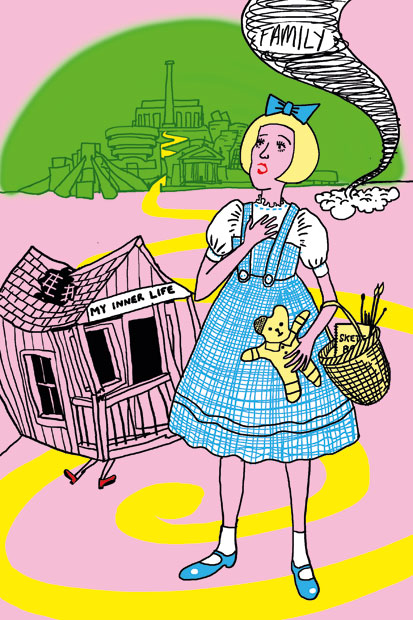At the time it was all too easy to get sucked in by the hype. In 2013, Grayson Perry was the first visual artist ever to give the Reith Lectures and — unlike so many of his dry, earnest predecessors — here was a speaker ready to fulfil all three Reithian aims: to inform, educate and entertain. (‘I still find commercial art galleries intimidating,’ he observed in the first lecture. ‘From the frighteningly chic gallery girls on the front desk to the reverential hush around arcane lumps of stuff inside.’)
Here also was a transvestite potter from Essex being welcomed to the heart of the British cultural establishment, a one-time outsider who’d made his name with pots depicting fetishism and bondage.
Greeted by critical acclaim, audience laughter throughout and feet-stamping appreciation at the end, the lectures were a four-part quest to explain the strange workings of the contemporary art world. They have now been tidied up — and complemented by a set of cartoon illustrations — for a book called Playing to the Gallery. Its publication allows us to assess, beyond the pithy observations, just how much depth there was to Perry’s discourse.
He certainly asks many pertinent questions — such as ‘what is good art?’, ‘who is the judge of that today?’ and ‘has art lost its ability to tell stories, mass-communicate and push boundaries, becoming instead an asset class, big lumpen loads of cash on walls?’
Perry is a likeable guide through slightly off-putting waters, a non-elitist who feels that art should be for everyone. He’s a convincing guide to boot, as someone who — en route to national treasure status, with a CBE and Royal Academicianship — has successfully navigated those waters over three decades.
At several points, I find his views entirely echoing my own. Particularly on the meteoric, none too welcome rise of curators, a species who serve as exegetes for the increasing amount of conceptual art produced nowadays. Simultaneous with this has been the rise of International Art English, the deliberately impenetrable language curators use (‘where “visual” becomes “visuality”, “global” becomes “globality”… and it all sounds a bit like inexpertly translated French’) in a bid to stress the faux-profundity of what they do.
Playing to the Gallery is full of interesting thoughts, but where Perry frustrates is his tendency to flit from one of them to another without analysis. Time after time, he chooses a wisecrack over wise counsel, appearing to be on the verge of making a telling point when he backs out and opts for a gag instead. For instance, when he suggests that art has lost its ability to shock any more, he rounds off the claim with: ‘The last truly dangerous thing — the only thing you won’t see in art today — is underarm hair.’
Perhaps the major surprise of this book, though, is that, for all the praise of Perry’s deft skewering of the art world, his views — deep down — are really rather traditional. He reveals himself in favour of a relatively narrow definition of what art is: namely, drawings, paintings and sculptures made by practitioners properly trained in their chosen technique.
Which, of course, is fine. There’s nothing wrong with conservatism. But it does cast our attention, troublingly, onto the proverbial elephant in the room. Namely, Perry’s cross-dressing. Just what purpose is served by his public appearances in the hair bows and frilly frocks? This he barely addresses — such that one begins to wonder, however unfairly, whether Perry himself is perhaps a self-publicist first and artist second. If so, is he not a beacon for the image-obsessed posturing in contemporary art that he so derides in Playing to the Gallery?
Available from the Spectator Bookshop, £12.99. Tel: 08430 600033






Comments